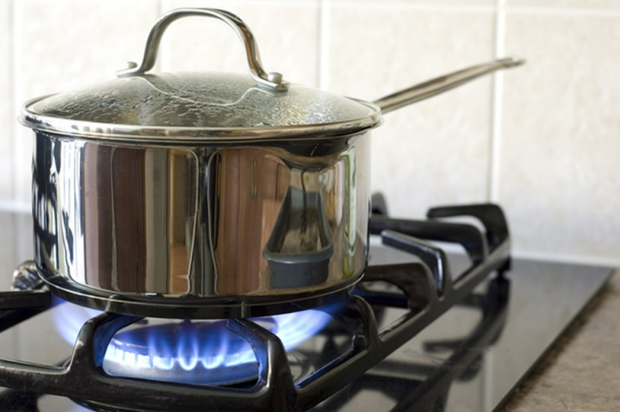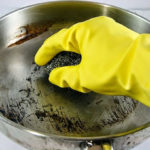Ensuring efficient gas usage while maintaining affordable monthly living costs is a common concern among households. Many housewives are constantly seeking ways to optimize their gas consumption without compromising the quality of meals prepared for their families.
Below are some effective ways to save gas:
Find the Perfect Gas Stove for Your Needs
When selecting a gas stove, it is important to take into account the number of residents in a household as well as their heating requirements. This will help determine the optimal gas stove in terms of space, cost, and energy efficiency. Consideration should be given to the following factors when making a gas stove selection:
When selecting a stove, it is important to consider the capacity and size that will meet your specific needs. Look for a stove that offers different cooking zones and an adjustable flame, allowing for customization in heat intensity. Additionally, opt for a stove that includes a drip tray and a dividing ring, as these features will help make cleaning easier. A stove with a suitable lid and pot is also advisable for efficient cooking. For safety purposes, choose a stove with a built-in safety valve that will automatically shut off the gas supply once the stove is turned off. Finally, if you have the ability to control cooking times, selecting a stove with a slower heating time will help prevent waste and ensure fire safety, particularly in cases where users may forget to monitor the stove.
Note: When installing, it is crucial to ensure secure connections to prevent gas leaks.

Having a suitable gas stove is essential to save energy and money when cooking. Here are some tips to help you choose the right one:
- Consider the size of your kitchen and the available space for the gas stove. Measure the area where you plan to place it to ensure a proper fit.
- Look for gas stoves with energy-efficient features, such as a high BTU (British Thermal Unit) rating and efficient burners. These features will help you cook faster and use less gas.
- Check if the gas stove has an energy-saving mode or timer. These functions can automatically turn off the stove after a certain amount of time, helping you save energy.
- Read reviews and compare prices of different gas stove models to find the best value for your money. Look for reputable brands that offer good warranties and customer service.
- Consider the type of cooktop you prefer. Gas stoves typically come with either a sealed burner cooktop or an open burner cooktop. Sealed burner cooktops are easier to clean, while open burner cooktops provide more control over the heat.
- Check if the gas stove is compatible with your home’s gas supply. Some stoves require natural gas, while others can be converted to use propane.
- Lastly, consider the design and aesthetics of the gas stove. Choose a style that fits your kitchen’s decor and personal preference.
By considering these factors and choosing a suitable gas stove, you can save energy and money when cooking without compromising on performance.
Gas Saving Tips
Implementing the following tips can help you reduce your monthly gas consumption and save a significant amount of money for your family:
- Regularly maintain your vehicle to ensure optimal fuel efficiency
- Avoid aggressive driving, such as excessive speeding and rapid acceleration
- Carpool or use public transportation whenever possible
- Plan your trips efficiently to combine multiple errands into one trip
- Avoid unnecessary idling by turning off your engine when parked
- Keep your tires properly inflated to improve fuel efficiency
- Use cruise control on highways to maintain a steady speed
Remember, by consistently implementing these tips, you can save both money and the environment.
Choosing the Perfect Pot for Cooking
When choosing a pot for cooking, it is important to consider the size that is appropriate for the amount of food you need to prepare. Cooking a small amount of food in a large pot is wasteful and inefficient. If you are cooking smaller dishes, using a pressure cooker is a viable option. Not only does it cook the food quickly, but it also helps to conserve gas.
Using appropriate cookware can effectively reduce gas consumption each month. Pots with narrower bottoms, such as aluminum, stainless steel, and thin-bottomed pots, require more time to transfer heat, resulting in significant gas savings during cooking.
It is recommended to avoid constantly turning the stove on and off.
Prior to cooking, it is recommended to properly prepare the ingredients by washing vegetables and peeling and cutting meat. Once the preparation is complete, proceed to turn on the stove and ensure it remains continuously in use until the cooking process is finished. This approach helps to optimize the efficient use of gas, as adding ingredients to the pot without interruption reduces gas consumption. Frequent on and off switching of the stove results in unnecessary gas release and also leads to a shorter lifespan for the appliance.
Ensure that the flame is adjusted correctly for optimal performance.
When cooking with a large flame, it is crucial to properly adjust the flame to concentrate heat on the bottom of the pot. By adjusting the burner knob while simmering, you can ensure that the flame remains focused and does not spread outside the pot. An excessive flame not only wastes gas but also distributes heat unevenly, preventing the desired concentration of heat inside the pot.

Smart Tips to Save Gas When Cooking
1. Use lids on pots and pans
Using lids while cooking helps to trap heat inside the cookware, making the cooking process more efficient and reducing gas usage.
2. Opt for smaller burners
When cooking small meals or using smaller pots and pans, using smaller burners can help to optimize gas usage.
3. Plan your cooking in advance
By planning your meals and cooking in advance, you can reduce the time spent in the kitchen and minimize gas usage.
4. Use a pressure cooker
Pressure cookers cook food faster and more efficiently, saving both time and gas.
5. Keep your cookware clean and well-maintained
Clean and well-maintained cookware ensures optimal heat distribution, reducing the need for higher gas settings.
These smart tips can help you save gas while cooking, reducing your energy consumption and environmental impact. Give them a try and see the difference!
Use the hot water that is available
When cooking, it is essential to monitor the water levels in each dish. It is crucial to add the appropriate amount of water from the start, avoiding both excess and deficiency.
To ensure efficiency while cooking, consider using already hot water when additional moisture is required. This can include hot tap water, water stored in a thermos, or boiling water. By doing so, you can prevent the introduction of cold water that would lower the temperature and necessitate another boiling session. Moreover, covering the pot while boiling can expedite the process, resulting in faster boiling time and optimal gas conservation.
Pre-soaking Ingredients Before Cooking
Pre-soaking ingredients can significantly reduce gas consumption during cooking. When ingredients are directly cooked without pre-soaking, the tap water used during the cooking process needs to be heated, resulting in wasted gas. Therefore, it is recommended to pre-soak the ingredients in a microwave or simmer them before cooking, as this not only speeds up the cooking process but also helps conserve gas.
It is recommended to use a windscreen when using a gas stove.
The windscreen, also referred to as a gas-saving ring, is a metal accessory designed to optimize energy efficiency. By creating a protective barrier around the burner, this ring effectively retains heat during boiling processes, directing the heat towards the pot. As a result, energy consumption is significantly reduced by using this innovative solution.
Everything you need to know about cooking.
Some individuals who manage household tasks may often engage in multitasking, including cooking, only to realize later that they have neglected or forgotten about it. This can result in wasteful gas usage and compromise the nutritional value of the prepared food.
It is important to lock the gas valve after cooking.
After cooking, it is important to securely lock the gas valve. This will allow for the safe release of a portion of the gas outdoors, while also ensuring the user’s safety by preventing any gas leakage or potential fire hazards.
It is important to regularly clean the gas stove in order to maintain its functionality and appearance. By cleaning the gas stove on a regular basis, you can ensure that it is free from dirt, grime, and grease buildup that can affect its performance and even cause safety hazards. Additionally, cleaning the gas stove will help to keep it looking its best, making your kitchen more inviting and aesthetically pleasing. Therefore, it is highly recommended to incorporate gas stove cleaning into your regular cleaning routine to prolong its lifespan and ensure a safe and efficient cooking experience.
It is recommended to clean your gas stove daily to prevent blockage of the gas nozzle by waste gas. Neglecting regular cleaning may result in a clogged nozzle, hindering the ignition process and leading to inefficient cooking. Keeping your gas stove clean will ensure a smooth cooking experience and save you valuable time.
How to Cut Down on Fuel Usage When Cooking
Families across the nation are striving to find ways to maximize their cost savings while still guaranteeing safety when utilizing a gas stove.






































